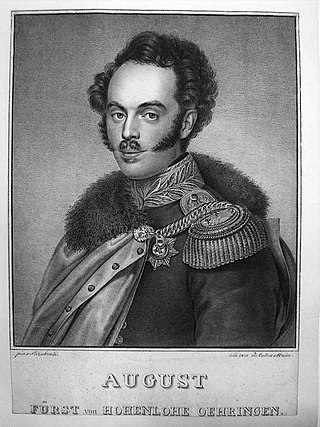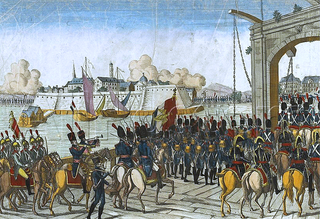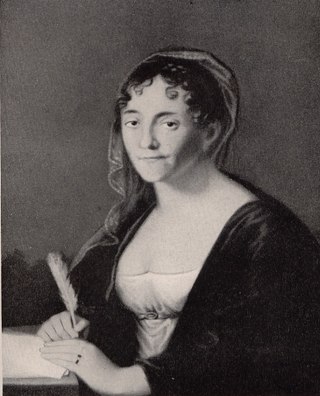Biography
He began his military career as a boy, serving against the Prussians in the last years of the Seven Years' War. Entering the Prussian army after the peace, he was, as a result of his princely rank, at once made a major; and in 1775 he was elevated to lieutenant-colonel. In 1778 Frederick Louis took part in the War of the Bavarian Succession and at about the same time was made a colonel. Shortly before the death of King Frederick the Great, he was promoted to the rank of major general and appointed Chief of a Regiment. For some years the prince did garrison duty at Breslau, until in 1791 he was made governor of Berlin. In 1794 he commanded a corps in the Prussian army on the Rhine and distinguished himself greatly in many engagements, particularly in the Battle of Kaiserslautern on 20 September.
Frederick Louis was at this time the most popular soldier in the Prussian army. Blücher wrote of him that he was a leader of whom the Prussian army might well be proud. He succeeded his father in the principality, and acquired additional lands by his marriage with a daughter of Count von Hoym. In 1806 Frederick Louis, now a general of infantry, was appointed to command the left wing of the Prussian forces opposing Napoleon, having under him Prince Louis Ferdinand of Prussia; but, feeling that his career had been that of a prince and not that of a professional soldier, he allowed his quartermaster-general, the incompetent Oberst (Colonel) Christian Karl August Ludwig von Massenbach to influence him unduly. Disputes soon broke out between Hohenlohe and the commander-in-chief the Duke of Brunswick, the armies marched hither and thither without effective results, and finally Frederick Louis's army was almost destroyed by Napoleon at the Battle of Jena on 14 October 1806.
The prince displayed his usual personal bravery in the battle, and managed to rally a portion of his corps near Erfurt, whence he retreated into Prussia. But the pursuers followed him up closely and Marshal Joachim Murat intercepted his corps at Prenzlau. On the morning of 28 October, a fortnight after Jena and three weeks after the beginning of hostilities, Hohenlohe refused two French demands that he surrender. However, the initial fighting went against the Prussians in the Battle of Prenzlau. Massenbach, who had gone to negotiate with the French, suddenly turned up with the news that the French completely surrounded them, which was untrue. Influenced by his chief of staff and assured by Murat "on his honour" that 100,000 French had encircled his forces, Hohenlohe capitulated with 10,000 men (in fact, Murat had no more than 12,000 near Prenzlau, including only 3,000 infantry).
Frederick Louis's former popularity and influence in the army had now the worst possible effect, for the commandants of garrisons everywhere lost heart and followed his example. The capitulation of Pasewalk occurred on 29 October, the capitulation of Stettin on the night of 29–30 October, and Küstrin surrendered on 1 November. Before the month of November was over, the Siege of Magdeburg ended in a capitulation. West of the Elbe River, the Sieges of Hameln, Nienburg, and Plassenburg also ended badly for Prussia.
After two years spent as a prisoner-of-war in France, Frederick Louis retired to Sławięcice Palace (Schloss Slawentzitz) and its estates, living in self-imposed obscurity until his death. He had, in August 1806, just before the outbreak of the War of the Fourth Coalition, resigned the principality to his eldest son, not being willing to become a mediatized ruler under Württemberg suzerainty.
Christian Karl August Ludwig von Massenbach, Prussian soldier, was born at Schmalkalden, and educated at Heilbronn and Stuttgart, devoting himself chiefly to mathematics.

Hohenlohe-Langenburg was a German county and later principality in the Holy Roman Empire. It was located in the current northeastern Baden-Württemberg, Germany, around Langenburg. Since the medieval times this small state was ruled by the House of Hohenlohe, counts and since 1764 ruling Princes of the Holy Roman Empire, until 1806. The princely House of Hohenlohe-Langenburg still owns and lives in Langenburg Castle today.

The House of Hohenlohe is a former German princely dynasty. It ruled an immediate territory within the Holy Roman Empire which was divided between several branches. The Hohenlohes became imperial counts in 1450. The county was divided numerous times and split into several principalities in the 18th century.

Rosalie von Rauch, was a German noblewoman and, since 1853, Countess of Hohenau.
Hohenlohe is a German princely family and a district in Baden-Württemberg, Germany.

Adolf Karl Friedrich Ludwig Prinz zu Hohenlohe-Ingelfingen was a Prussian nobleman, soldier, and politician. He briefly served as Minister-President of Prussia in 1862 and was succeeded by Otto von Bismarck.
Friedrich Karl Wilhelm, Fürst (prince) zu Hohenlohe-Ingelfingen was a general in the military service of the House of Habsburg during the French Revolutionary Wars and the Napoleonic Wars. He was born in Ingelfingen, in southwest Germany, on 16 February 1752.
Carl Ludwig II, 5th Prince of Hohenlohe-Langenburg, was the eldest son of Ernst I, Prince of Hohenlohe-Langenburg. He was the fifth Prince of Hohenlohe-Langenburg.

Victor I, Duke of Ratibor, Prince of Corvey, Prince of Hohenlohe-Schillingsfürst was a member of House of Hohenlohe-Schillingsfürst and later Duke of the Silesian duchy of Ratibor and Prince of Corvey.

Frederick August Charles, Prince of Hohenlohe-Öhringen was a German general of the Napoleonic Wars and nobleman of the house of Hohenlohe.

In the Capitulation of Erfurt on 16 October 1806, a large body of troops from the Kingdom of Prussia under Lieutenant General the Prince of Orange surrendered to Marshal Joachim Murat of France, at the city of Erfurt. The Prussian soldiers were demoralized by their shattering defeat at the Battle of Jena–Auerstedt on 14 October and unwilling to put up much resistance. The event occurred during the War of the Fourth Coalition, part of the Napoleonic Wars. Erfurt is located on the Gera River about 40 kilometers west of Jena.

In the Battle of Prenzlau or Capitulation of Prenzlau on 28 October 1806 two divisions of French cavalry and some infantry led by Marshal Joachim Murat intercepted a retreating Prussian corps led by Frederick Louis, Prince of Hohenlohe-Ingelfingen. In this action from the War of the Fourth Coalition, Hohenlohe surrendered his entire force to Murat after some fighting and a parley. Prenzlau is located about 90 kilometers north of Berlin in Brandenburg.

The Capitulation of Pasewalk on 29 October 1806 resulted in the surrender of Oberst (Colonel) von Hagen's 4,200 Prussian soldiers to an inferior force of two French light cavalry brigades led by Generals of Brigade Édouard Jean Baptiste Milhaud and Antoine Lasalle. The Prussians were completely demoralized after a two-week-long retreat following their decisive defeat at the Battle of Jena-Auerstedt. Pasewalk is 110 kilometers north of Berlin and about 40 kilometers west of Szczecin (Stettin), Poland.

In the Capitulation of Stettin on 29–30 October 1806, Lieutenant General Friedrich Gisbert Wilhelm von Romberg surrendered the garrison and fortress to a much smaller French light cavalry brigade led by General of Brigade Antoine Lasalle. This event was one of a number of surrenders by demoralized Prussian soldiers to equal or inferior French forces after their disastrous defeat at the Battle of Jena-Auerstedt on 14 October. Stettin, now Szczecin, Poland, is a port city on the Oder River near the Baltic Sea, about 120 kilometres (75 mi) northeast of Berlin.

Karl Ludwig, 3rd Prince of Hohenlohe-Langenburg was the third Prince of Hohenlohe-Langenburg. He was the first child of Prince Christian Albert of Hohenlohe-Langenburg and his wife, Princess Caroline of Stolberg-Gedern.

Ludwig of Hohenlohe-Langenburg was a Count of Hohenlohe-Langenburg. On 7 January 1764, he was elevated to Imperial Prince by Emperor Francis I.

Adolph, Landgrave of Hesse-Philippsthal-Barchfeld was a member of the House of Hesse. He was the ruling Landgrave of Hesse-Philippsthal-Barchfeld from 1777 until his death.

Countess Amalie Henriette Charlotte of Solms-Baruth was an Imperial countess of Solms by birth and Princess of Hohenlohe-Langenburg by marriage.

Landgrave Charles August Ludwig Philip of Hesse-Philippsthal-Barchfeld was a member of the House of Hesse and was the ruling Landgrave of Hesse-Philippsthal-Barchfeld from 1803 to 1806 and from 1813 until his death.

Friedrich Wilhelm Eugen Karl Hugo, Prince of Hohenlohe-Öhringen, Duke of Ujest was a German nobleman, politician, mining industrialist and general in the armies of the kingdom of Württemberg and the kingdom of Prussia.
















